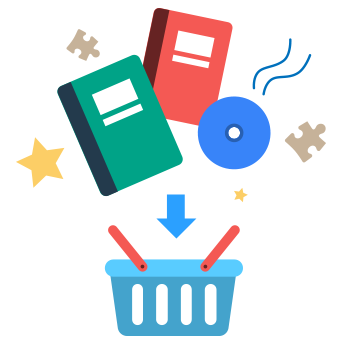Key Takeaways:
- Literacy-rich activities encourage students to interact and connect with each other.
- Science nonfiction is a key genre to help students shift from a model of “learning to read” to a mindset of “reading to learn.”
- Scholastic’s SuperScience magazine supports active learning and engagement in all subject matters—including ELA.
As a 5th grade ELA teacher, it is essential that I expose my students to all types of genres as they continue to shift from a model of “learning to read” to a mindset of “reading to learn.” Scholastic’s SuperScience magazine is a key ingredient in creating an environment that promotes nonfiction sources where students can collaborate and learn from each other.
It would seem obvious that SuperScience can be used during your science lessons. However, there are many different options for fully optimizing this resource in your ELA block. Teachers can easily implement formative and summative assessments on SuperScience articles using their own state test specifications. As a colorful and engaging magazine, which comes with an equally exquisite website, SuperScience provides a great multimedia experience when researching for an informative and engaging writing assignment.
For example, I recently used the article “Earth Rocks!” to meet the Language Arts Florida Standards: explaining the relationships or interactions between two or more individuals, events, ideas, or concepts in a historical, scientific, or technical text based on specific information in the text. Students divided into groups and designed their own graphic organizers that compared and contrasted the five rock formations from the article. With student-led groups, learners become teachers. Each team member contributes to their peer group as they demonstrate proficiency and success in understanding the standard’s learning target.
As an educator, I also strive to provide students with engaging and meaningful assessments that move beyond traditional paper and pencil examinations. SuperScience provides reading comprehension assessments that align with state-wide testing and can be assigned through Google Classroom. That keeps the assessment rigorous and modern. The SuperScience article “Going Green” in the April 2019 Earth Day issue had higher-level vocabulary and literacy-rich information that made assessing my students purposeful and strategic.
I also used the article “Trash Collector” from the same issue. While celebrating Earth Day, students were assigned a writing project on highlighting people who have helped keep Earth clean. They used the article as a resource for evidence and continued their research further by watching the SuperScience video “Meet Mr. Trash Wheel”. Emphasizing the importance of sufficient and relevant evidence to use for elaboration in informative writing will determine students’ success and understanding of the writing assignment. Students need to produce deepened knowledge of assigned subject matter, and provide adequate examples, to grow as young authors.
Literacy-rich activities shape every subject area—even math. Creating a setting that gives students the opportunity to read, write, and speak using a variety of paper-based and digital materials encourages connection and interaction between students. SuperScience magazine enhances and supports active learning and engagement in all subject matters. It’s perfect for your ELA classroom!
If you’re looking for more ways to bring reading and writing opportunities into your science class, check out SuperScience magazine. You can even try it free for 30 days when you place an order for the 2019–2020 school year.






